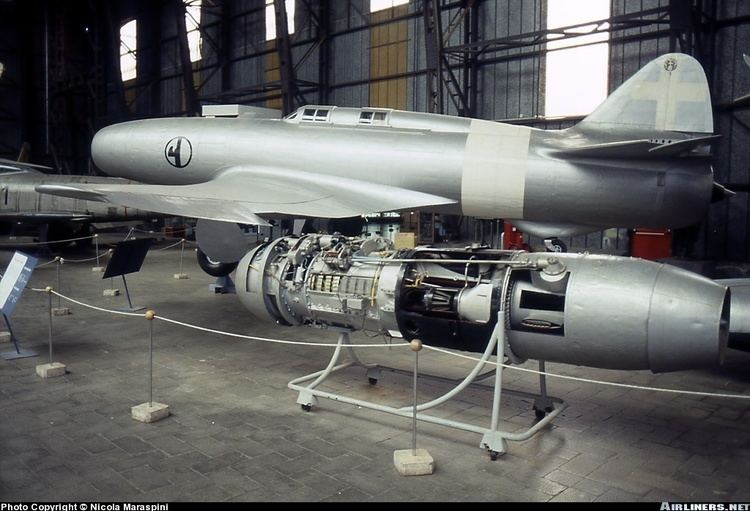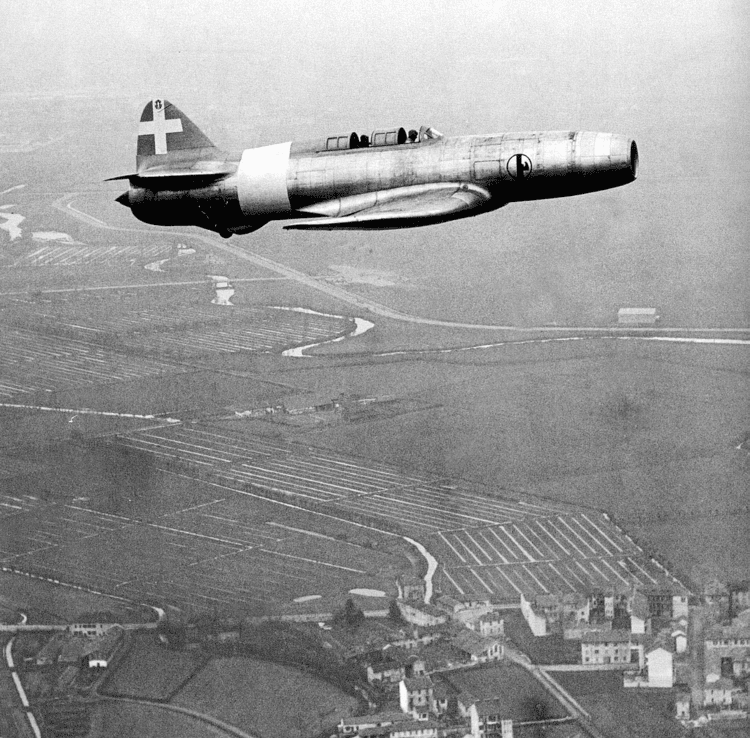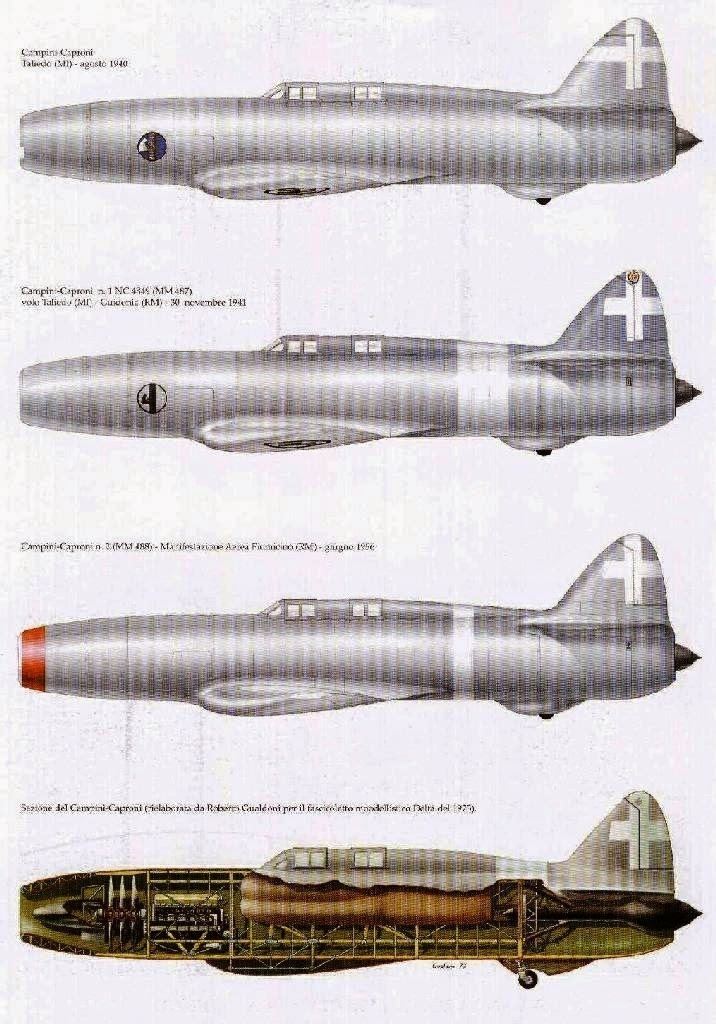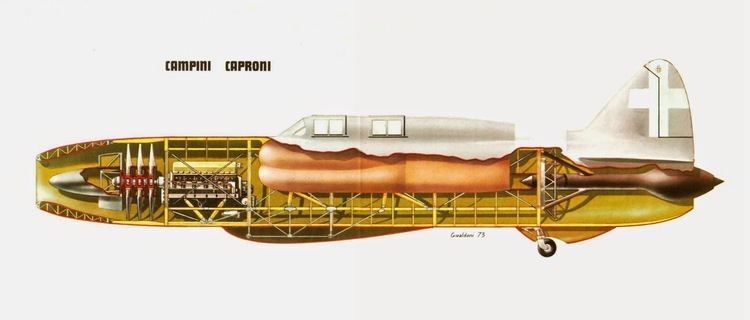Top speed 375 km/h Wingspan 16 m Engine type V12 engine | Weight 3,640 kg Length 13 m First flight August 27, 1940 | |
 | ||
Italian 1940 caproni campini n 1 jet plane
The Caproni Campini N.1, also known as the C.C.2, was an experimental aircraft built by the Italian aircraft manufacturer Caproni. The N.1 was powered by a motorjet, a type of jet engine that powers the compressor using a conventional aircraft engine. The N.1 first flew in 1940, and as news of the Heinkel He 178's flight in 1939 had not yet been made public, the FAI listed the N.1 as the first successful jet-powered aircraft. The N.1 was the only model in the series.
Contents
- Italian 1940 caproni campini n 1 jet plane
- Valom 1 72 caproni campini n 1 72073
- Design and development
- Operational history
- Operators
- Survivors
- Specifications
- References

Valom 1 72 caproni campini n 1 72073
Design and development

In 1931, Italian engineer Secondo Campini submitted a report on the potential of jet propulsion to the Regia Aeronautica, and demonstrated a jet-powered boat in Venice the following year. In 1934, the Regia Aeronautica granted approval for the development of a jet aircraft to demonstrate the principle.

As designed by Campini, the aircraft did not have a jet engine in the sense that we know them today. Rather, a conventional 900 hp (670 kW) Isotta Fraschini L.121 RC.40 12-cylinder liquid-cooled piston engine was used to drive a three-stage variable-incidence compressor, which forced air into a combustion chamber where it was mixed with fuel and ignited. The exhaust produced by this combustion was to drive the aircraft forward. Campini called this configuration a "thermojet," but the term "motorjet" is in common usage today. It has also been described as a ducted fan.

The relatively small duct resulted in low mass flow, and thus low propulsive efficiency. In modern designs this is offset through high overall pressure ratios, but the N.1 had a low pressure ratio and thus low thermal efficiency as well. As a result, the engine had relatively low thrust, about 1,550 lbf, and very poor fuel economy.
Operational history

Campini turned to the Caproni aircraft factory to help build the prototypes, and two aircraft and a non-flying ground testbed were eventually constructed. The first flight from Caproni's Taliedo factory took place on 27 August 1940 with test pilot Mario De Bernardi at the controls. He reported reaching 225 mph at "barely half throttle". De Bernardi would do most of the flying of the N.1 As the August 1939 flight of the Heinkel He 178 V1 was still unknown at this time, the Fédération Aéronautique Internationale recognized this at the time as the first successful flight by a jet aeroplane.

On 30 November 1941 an N.1 flew from Milan's Linate Airport over Pisa and then landed at Rome's Guidonia Airport. The pilots, De Bernardi and Giovanni Pedace, were met by Benito Mussolini, as well many members of the press and aeronautical establishment. The 320 mile flight was promoted as the first cross-country flight by a jet aircraft, as well as the first jet-mail delivery. However, during the flight the combustion chamber was never operated in order to save fuel, thus the aircraft used the propulsion given by the ducted fan more than the propulsion given by the exhaust gasses.
Following World War II, one of the prototypes was shipped to the United Kingdom for study at the Royal Aircraft Establishment at Farnborough.
Operators
Survivors
The prototype taken to the United Kingdom for tests subsequently disappeared. The other prototype is now on display at the Aeronautical Museum of Vigna di Valle near Rome and the ground testbed (fuselage only, in very poor condition) is at the Museum of Science and Technology in Milan.
Specifications
Data from Illustrated Encyclopedia of Aircraft
General characteristics
Performance
